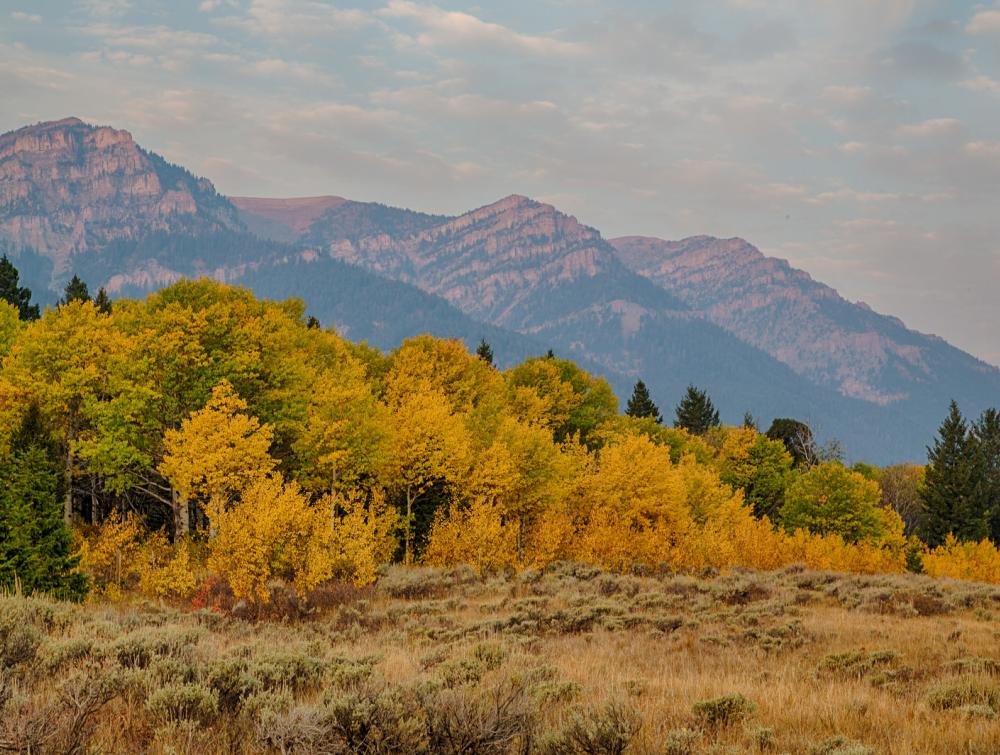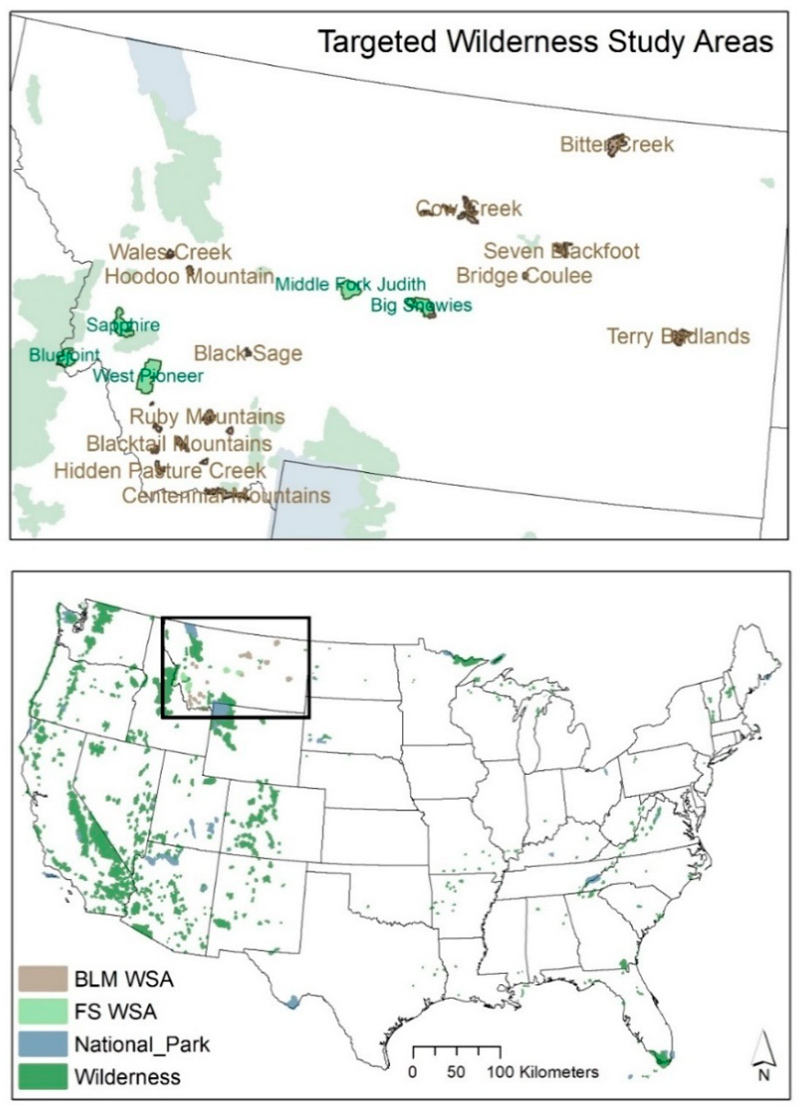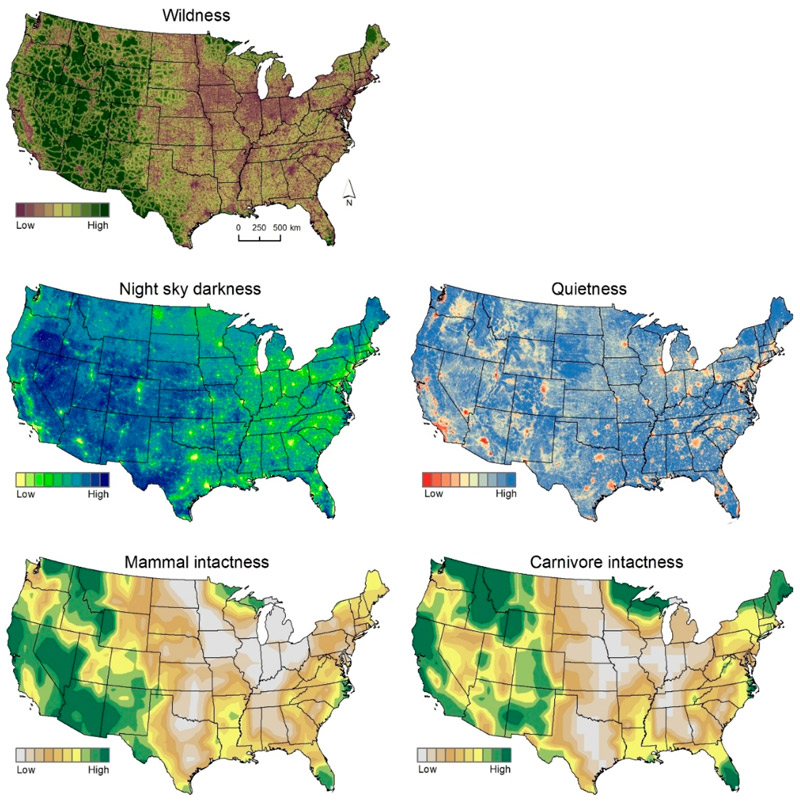Study: At-risk Montana public lands may be wilder than many national parks

Centennial Mountains, WA
Bob Wick, BLM
Measured by solitude, lack of roads, wildlife and other factors, Montana public lands targeted by Congress for reduced protection are actually wilder than many national parks and designated wilderness areas.
Congress is considering proposals that would strip protections from hundreds of thousands of acres of public lands in Montana, potentially opening them up to mining and drilling. But far from barren terrain, new research shows these tracts to be as intact and valuable as many iconic national parks.
A study published in the journal Land looked at 29 wilderness study areas in Montana targeted for "demotion" by Sen. Steve Daines and Rep. Greg Gianforte, ranging from the grasslands of Bitter Creek, in the northeast, to the Centennial Mountains, butting up against the Continental Divide in the southwest. It found that the wilderness study areas are "comparable" to nationally significant national parks and wilderness areas in the lower 48 states--and in some cases, more valuable from a conservation standpoint.
This suggests they richly deserve not only their current status, which keeps them safe from development on provisional terms, but perhaps an elevated level of protection—including, in some cases, as federal wilderness areas.
Montana wilderness study areas targeted for "demotion":

What makes land wild?
The new findings evaluate the conservation value of wilderness study areas, wilderness areas and national parks using five different criteria. Greatly simplified, this is what makes public land 'wild':
- It hasn't been heavily developed or modified by people. The criterion referred to as "wildness" uses data on human population density, road coverage and other factors to measure how much people have physically changed a given area. By that yardstick, the study found that most of the Montana wilderness study areas targeted for reduced protection—23 of 29 total—were wilder than half of all national parks and wilderness areas.
- Wildlife populations are relatively undisturbed...The new study looked at populations of mammal species compared to what was historically present on public lands and found that nearly half of the Montana wilderness study areas had "mammal intactness" greater than half of national parks and wilderness areas.
- ...Including populations of endangered or threatened carnivores. The presence of endangered, threatened or sensitive carnivore species—or populations of species--like grey wolves, grizzly bears, mountain lions and wolverines was also measured. The so-called "carnivore intactness" of most of the wilderness study areas outpaced that of half of national parks and wilderness areas. Carnivores are considered key to balanced ecosystems.
- You can still see stars at night. As cities expand, so does light pollution, which can inhibit our ability to experience truly dark skies and clear stars at night. Recognizing the value of public lands for preserving these experiences, the National Park Service monitors and studies light pollution at its parks. Seven of the Montana wilderness study areas boast more "intact" night skies than half of all national parks and wilderness areas.
- You can find peace and quiet. Surveys of acoustic data show that to find some peace and quiet, your best bet is to get away from cities and head to big national parks and other protected areas, where intrusive development has been kept to a minimum (According to one study, Yellowstone National Park and Colorado’s Great Sand Dunes National Park are among the quietest places in the country, with a level of “background noise”—about 20 decibels—comparable to what may have been present before European colonization). Twelve of the wilderness study areas included in the new report are quieter than half of all national parks and wilderness areas.
Maps of values used to evaluate different wildness criteria:

Why these wilderness study areas matter
Wilderness areas are lands that are exceptionally untouched by development and have earned the highest possible level of protection under the federal government (some major national parks, including Yosemite and the Everglades, are largely or mostly protected as wilderness).
Wilderness study areas have been identified as good candidates for future wilderness protection—a status that can only be awarded by congressional action—and, in the meantime, are managed by agencies like the Forest Service to maintain their existing wild characteristics.
As these new findings make clear, despite their provisional status, the Montana wilderness study areas take a back seat to very few places in terms of sheer conservation value. If Sen. Daines and Rep. Gianforte's proposals are enacted, they would bring about the biggest reduction of public lands protection in Montana history, endangering lands that are even "wilder" than many national parks.
At a time when creeping development threatens our public lands and the solitude and natural beauty they provide, it is important to take stock of the value of shared spaces beyond the most visible and nationally iconic. Oftentimes, the seemingly "lesser" wildlands are treasures in their own right.
